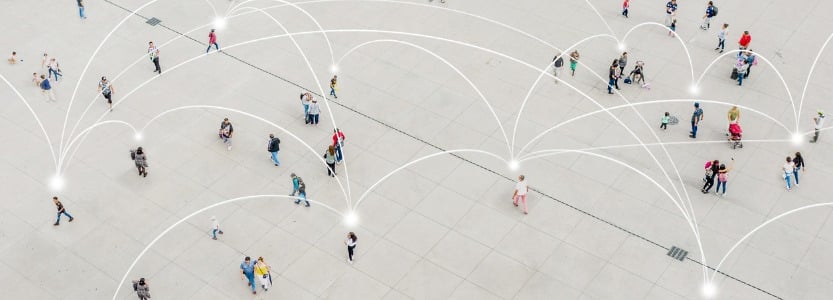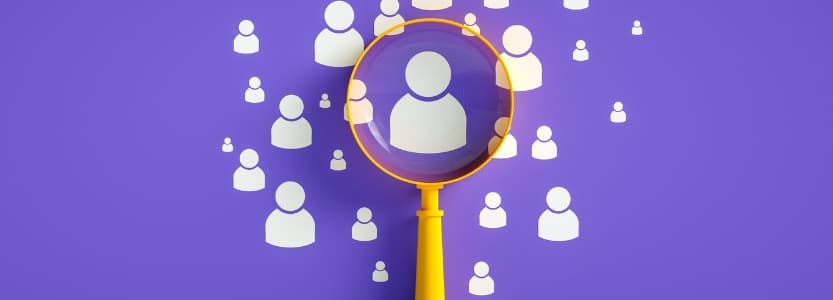How to streamline HR admin to improve the employee experience
Updated 18th September 2024 | 7 min read Published 25th September 2024

Those managing HR, let me ask you this: how much time do you spend managing tedious admin tasks compared to actually working with your people and building meaningful connections?
Recent studies have found that 73% of HR leaders feel they have to prioritise processes over people and 95% state they find working in people management overwhelming due to the excessive workload and stress.
For such a people-focused profession, there is a gargantuan amount of administrative work required.
However, HR doesn’t have to be this way! Through the clever use of HR software (also known as an HRIS), you can ditch the stress and refocus on supporting the employee experience.
In our recent webinar, HR Director, Lizzy Barry, and HR Software Expert, Stuart Bate, unpacked ways HR software can help tackle three of the biggest admin challenges businesses face today.
Minimising the associated admin burden of onboarding new starters
Prior to the webinar, we ran a poll, asking HR professionals what are the main areas where admin is becoming unmanageable; a large majority stated that onboarding new starters was a major pain point from an administrative perspective.
It’s vital you get it right as research has shown that good onboarding processes are fundamental to creating a happy and engaged workforce – in fact, studies found that good onboarding results in people staying at the business for longer!
So, what can you do to optimise those first few weeks and create a lasting positive perception?
How HR software can improve onboarding
Automation is the biggest game changer for onboarding.
Within HR software, you can set up workflows that automate repetitive tasks, such as emailing offer letters, sending out new starter forms, passing crucial information to payroll, dispatching relevant company materials, etc.
Setting up these workflows saves time and alleviates the associated stress of onboarding, in which many professionals worry whether they’ve completed all the necessary tasks to bring on a new starter.
Additionally, you can use HR software to reduce errors during the onboarding process, offering further peace of mind.
Integrating your HR software with other key systems, such as payroll and finance software, removes the risk of keying in information incorrectly.
Thanks to Application Programming Interfaces (APIs), the systems automatically share data; for example, when an employee inputs their bank details into the HR system as part of their onboarding, this information is immediately reflected in the payroll system, eliminating any risks of human error.
Managing employee relations
Ongoing employee relations also ranked highly in our poll as one of the biggest time-drains.
Everything from ensuring staff receive critical emails to updating data in the system and approving holiday requests eats away at valuable time in your day-to-day.
There are a lot of things that come onto HR’s plate which don’t add strategic value but are crucial to the running of a business.
How HR software supports the daily running of a business
As mentioned above, automation within HR software can take care of a lot of tasks which consume valuable time in your day-to-day.
However, you can also take automation a step further, setting automated reminders within the system to chase up leaders, managers and employees to complete assigned tasks.
Perhaps a manager needs to approve annual leave or an employee has quarterly objectives to review and approve – your HR software should be able to send these people automated reminders, alerting them to the task without you having to intervene.
Another time-saving string to your bow is employee self-service.
Via a self-service portal, employees can manage a wide array of basic tasks themselves, without having to involve managers or HR.
For example, through a self-service portal, staff can update their personal information, view/download payslips, request annual leave, manage benefits, access training and more.
Handling HR reporting
Is sickness absence increasing? What is the fiscal impact of bonuses this year? Which department has the most churn? There’s a never-ending amount of questions for HR.
Good HR data can unlock rich insights into employee engagement and satisfaction.
However, many are struggling to keep up with managing their people data.
Aside from the mass amount of daily responsibilities and requests from other teams, HR historically has struggled with reporting due to it being a hugely manual task.
Pulling manual reports often takes days, collating all the information from different data sources and manipulating the data into a usable format.
How good HR software can help you make the most of your people data
HRIS software provides a centralised location for all your people data, meaning you no longer have to store vital information in spreadsheets or across different locations.
Now, where it gets exciting is that good HR software enables you to create handy dashboards in the system, providing a centralised, real-time location for all the common data areas which you’ll need throughout your day-to-day.
These dashboards can be customised, containing any data points you need such as cost of sickness, days lost, headcount status, etc.
As well as the dashboards, HR software enables you to quickly build reports within the system, which can also be scheduled, saving you from pulling the same data set again and again.
Watch the webinar: Streamlining HR Admin
Streamlining HR admin is about more than just increasing efficiency; it’s about fostering a better work environment for employees and HR professionals. If you’re looking for more information, watch the full session with Lizzy and Stuart, covering all these points and more in even greater detail.
The session also features software demos, showcasing exactly how HR software can and should be used to aid these various areas.





